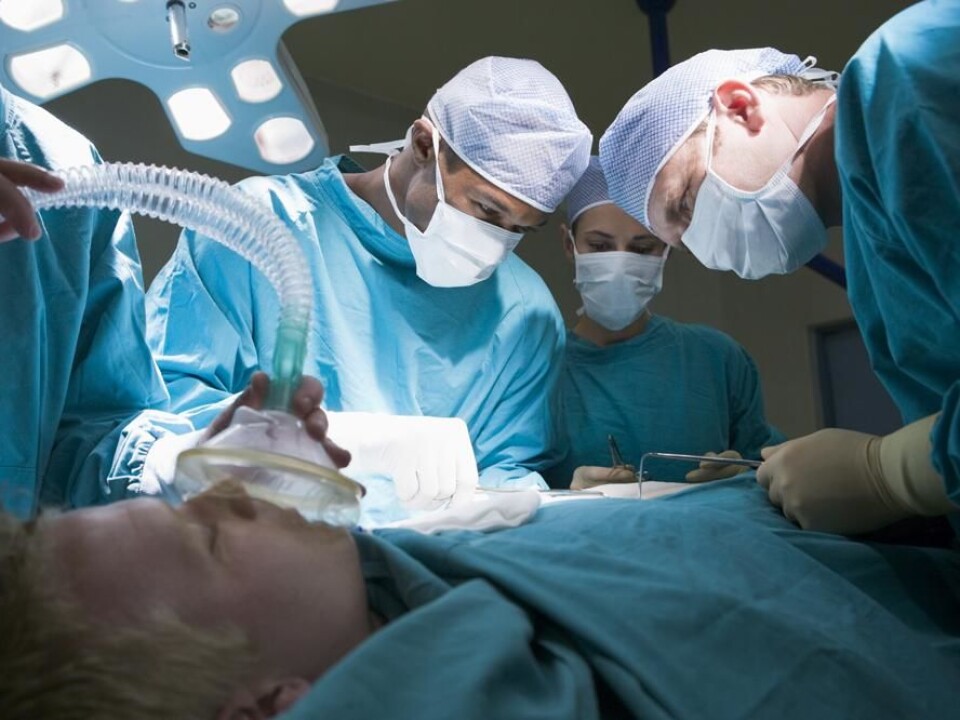This article was produced and financed by University of Stavanger

Creating safer surgery
Surgical procedures save and improve lives worldwide, but the figures on serious complications and deaths are high. The numbers can be reduced.
Denne artikkelen er over ti år gammel og kan inneholde utdatert informasjon.
According to a study in Boston, USA, 234 million major surgical procedures are conducted worldwide each year. This means that one out of 25 human beings undergoes a major surgical procedure each year.
Although surgery saves and improves lives, operations are also risky. According to the WHO, serious complications occur in three to 17 per cent of all procedures in industrialised countries.
Mortality during operations is 0.4-0.8 percent, which means that one million people die every year during or after a surgical procedure.
Robust operating teams

“Large numbers and large variations in the numbers indicate that improvements are possible,” says PhD student Sindre Høyland at the University of Stavanger (UiS).
Høyland focuses on quality and safety at Norwegian hospitals. He believes that instead of investigating errors and faults, the best way to reduce the negative figures is to focus on and learn from what already works well.
Høyland studied a surgical unit at Haukeland University Hospital in Bergen, where he observed 27 operations over more than 60 hours to identify aspects of the practices of surgeons, nurses and physicians contributing to positive outcomes of surgical procedures.
“There are always risks involved in an operation, but the outcome is determined by more than a tired surgeon,” says Høyland.
He describes the surgical operating teams as robust since the teams are prepared for unexpected incidents and complications that might occur, and since both personnel and equipment can be brought in or replaced, on short notice, if required.
“Flexible surgical units and operating teams represent a clear strength,” he says. “The unit under study had extra operating rooms, extra personnel and extra equipment available.
“Through this flexibility, the unit could compensate for increased pressure or illness.
“Surgeons and nurses also knew each other well. In my study, they were stationed at the surgical unit, and did not rotate between other units at the hospital, says Høyland
“As a result, they became familiar with each other, the routines, and the equipment. This familiarity was reflected in for instance the organisation, precision and efficient handling of instruments and equipment between nurse and surgeon.
“If disagreements arise during an operation, there is always someone, typically an experienced individual, who can calm things down and reconcile the team. This creates a sense of security both within the team and between individual colleagues.“
The PhD student also emphasises that the composition of a team, i.e. an entirely experienced team contra a mixed team, plays an important role in terms of how far for instance mood swings are allowed to affect the atmosphere in the operating room.
Delays and interruptions
A surgical team takes into account many obstacles that might prevent a successful outcome of an operation. These obstacles can include changes in the order of patients, inadequate planning of the operation, and deficiencies or delays in available or ordered equipment. External calls as well as people entering and leaving the operating room can also disrupt the flow of an operation, since the team always follows a stringent schedule.
“Despite all these uncertainties, a surgical team is well prepared,” says Høyland. “In particular, the team members combine both textbook knowledge and tacit knowledge, in their making of decisions during an operation.”
By “tacit” knowledge, he means the team’s ability to utilise many and relevant sources of information in decision-making.
For instance, the team draws on information from X-rays, patient monitors, the patient’s record, and each other’s experiences to anticipate what happens in the operating room over the next few hours.
“The ability to handle the unexpected is second nature to a surgeon, physician or nurse with many years of experience,” Høyland points out. He believes that tacit knowledge, combined with textbook knowledge and technical skills are crucial to the surgical team’s ability to create safe work practices.
As a result, the PhD student wants to refine the image held by many Norwegians of a national health system which constantly fails to deliver.
“The system strengths described represent the glue that holds the operations together. So even though surgical procedures are affected by ‘unfortunate’ system conditions, such as delays and disruptions, these are compensated for by the favourable team aspects.”
--------------------------------------------------
Read the article in Norwegian at forskning.no
Translated by: Rolf E Gooderham
Scientific links
- Weiser, Regenbogen, Thompson m.fl.: An estimation of the global volume of surgery, Lancet 2008;372:139-44, doi:10.1016/S0140-6736(08)60878-8. (Abstract)
- Haynes, Weiser, Berry, Lipsitz, Breizat, Dellinger m.fl.: A surgical safety checklist to reduce morbidity and mortality in a global population, The New England Journal of Medicine 2009; 360(5):491-499.Publishing Limited. (Abstract)






























